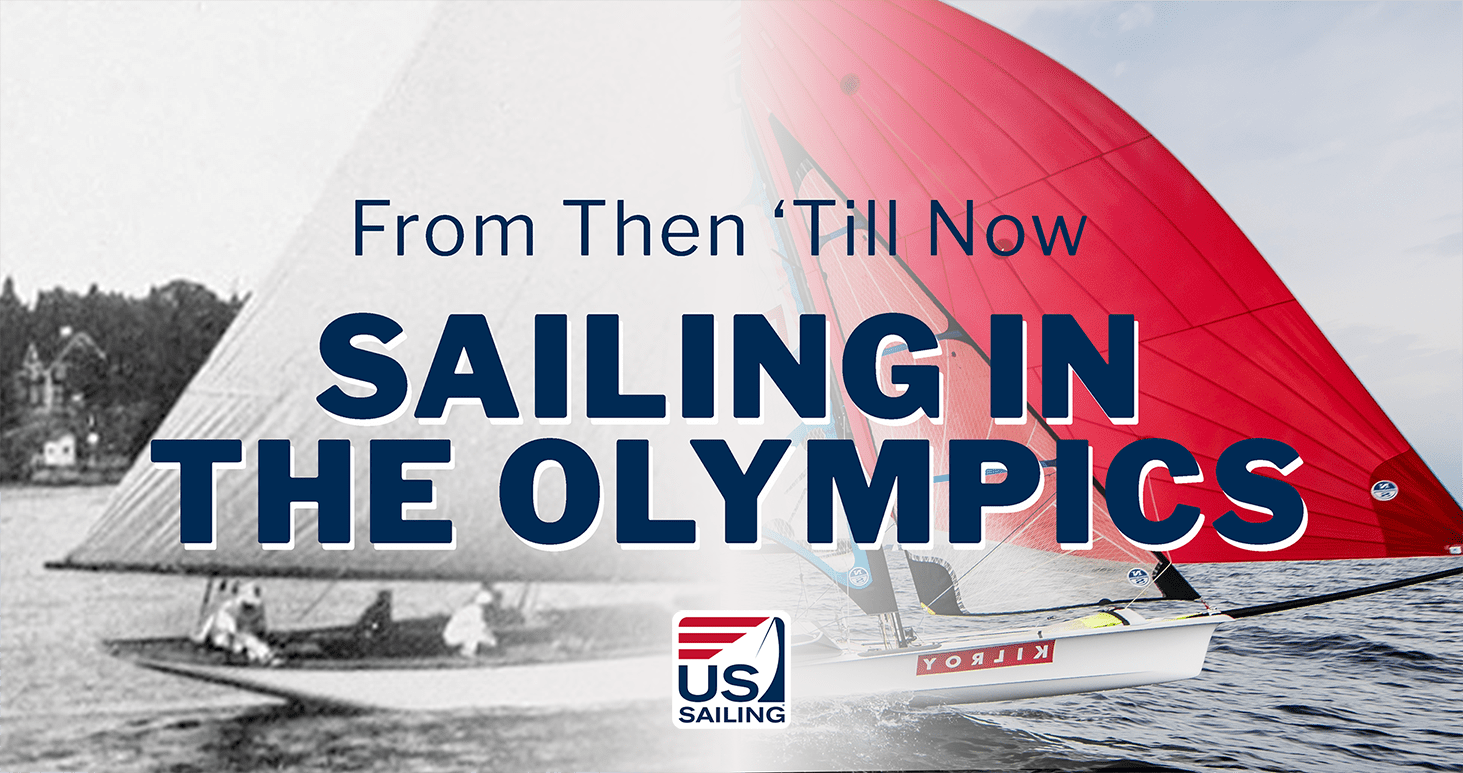Sailing has been a part of the Olympics since the dawn of the modern Olympiad in 1896 – only one year before the founding of the NAYRU, which later became US Sailing. The pathway of sailing in the Olympics and the evolution of US Sailing run (or sail?) a parallel course – as the sport evolved, so did its governing body and peak international competition.
A lot has changed over the last 126 years!
“It’s even visible in the name,” said Riley Schutt, Head of Technology for the US Sailing Team. “In the beginning, it was known as ‘Yachting,’ whereas now it is the program as ‘Sailing.’”
While sailing was on the official program for the 1896 Olympics, racing was cancelled due to lack of entries and severe weather conditions. When the sport truly premiered in Paris in 1900, the event features eight classes, 64 boats, and six countries.
Much like the rest of sailing in the early 20th century, boats in the 1900 Olympics were not one design, as they are now, but a variety of keelboats organized under a ratings system. The metric chosen in 1900 was the Tonnage rule, organizing boats into eight fleets, from 0-1/2 Ton to 20+ Ton. Medals were awarded by race, rather than an accumulation of points over a regatta.
One design racing – where all boats in a fleet are of the same make – was introduced to Olympic sailing competition in the 1920s. The ‘20s also saw the first inclusion of dinghies on the Olympic program – a trend that would continue until the elimination of keelboats entirely after London 2012.
As time went on, Olympic competition reflected the newest advancements within the sport. In 1960, the Flying Dutchman was added, marking the first trapezing boat. In 1976, the first multihull was added to the program, and in 1984, the first board class was introduced as those forms of sailing gained popularity across the world.
“Some of the changes we see in the Olympics trickle down from technology in, say, the America’s Cup,” said Schutt. “At the same time, the Olympic movement is primarily not about designing the best boat to go as fast as possible; rather, it aims to highlight the skill and athleticism of the sailors. Olympic classes must balance technology with accessibility and affordability, so that you don’t have to be the wealthiest nation in the world to compete.”
To this end, the current Olympic classes have far more restrictions on equipment, sails, and boat and board manufacture than their predecessors. Even when changes to classes are implemented – like the new 3Di sails in the 49er and 49erFX classes – they are rolled out in a way that attempts to make the changes accessible to all teams competing in the class.
One thing these early Olympics do have in common with the Games we know today was their open gender policy, allowing men and women to compete against each other on the racecourse. While much more stratified now, with mixed genders required in two classes at the upcoming Paris 2024 games, women and men competed against each other in the Olympics until 1948, when women were barred from sailing events.
76 years after that decision, the sailing community has made great strides in the direction of gender quality. The 2024 Games in Paris will be the first to feature complete gender parity in Olympic sailing competition – even numbers of medal opportunities for men and women throughout the entire sailing event.
As for the technology, Olympic sailing has followed where many trailblazers in the sport have led – the world of foiling. Advances in materials technology have made foiling, once a dream of inventors, a reality. Tokyo 2020 saw the first foray into foiling boats with the updated Nacra 17, and in 2024, half of the sailing events will be held in foiling classes (the iQFOil, Formula Kite, and Nacra 17).
Throughout history, sailing at the Olympics has held a mirror to the sport, reflecting its most aspirational qualities and ambitions – whether that is winning gold aboard 12 metre yachts or foiling to the podium on kiteboards.

